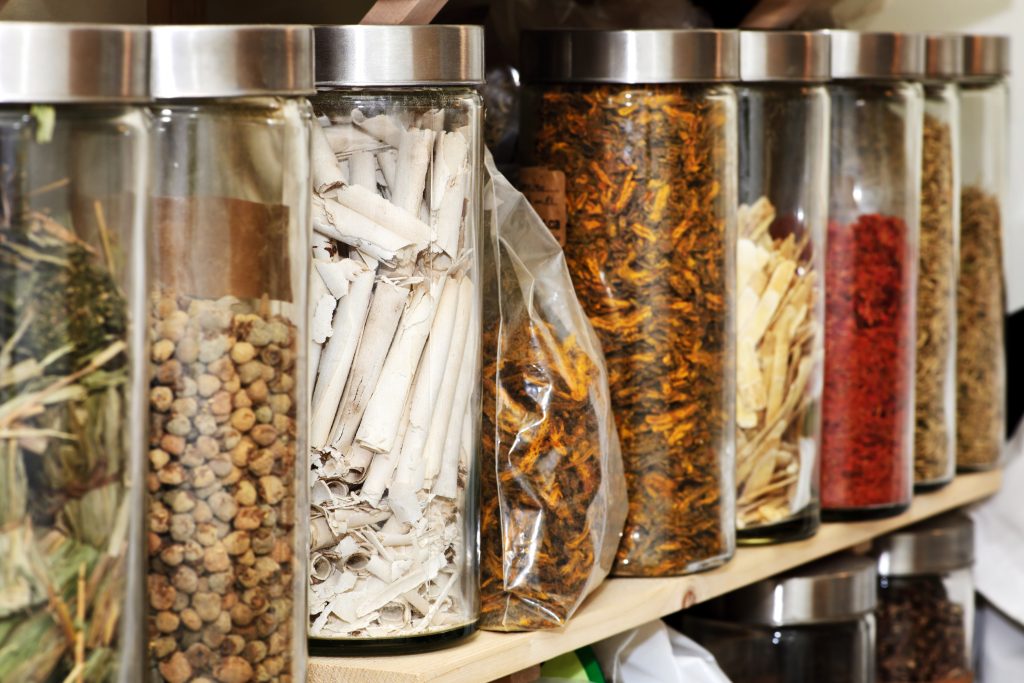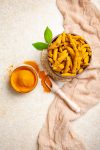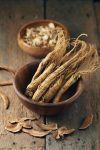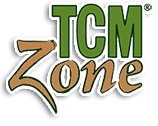Herbal Pharmacology Unveiled: Mastering Active Compounds, Synergies, and Navigating Herb-Drug Interactions for Seasoned Acupuncturists and Herbalists

By Xiyuan “Alex” Qiu, L.Ac.
In the intricate realm of Traditional Chinese Medicine (TCM), where expertise meets the nuances of herbalism, the profound influence of herbal formulations is not a mere tradition but a result of a deep understanding of pharmacological intricacies. For acupuncturists and herbalists who have traversed the basics, this blog aims to delve into the advanced aspects of herbal pharmacology—analyzing active compounds and synergies within key herbs. It’s a journey that goes beyond the surface, offering insights for targeted therapeutic outcomes based on a comprehensive understanding of herbal intricacies. Moreover, we’ll explore common herb-drug interactions, crucial knowledge for practitioners to ensure patient safety.
Decoding Ginseng (Panax ginseng): The Pharmacological Powerhouse
Ginseng, a perennial favorite in TCM, holds a special place in the pharmacological toolkit. Beyond its adaptogenic reputation, it’s the ginsenosides, a diverse family of steroidal saponins, that define its potency. As seasoned practitioners, you understand that specific ginsenosides like Rg1 and Rb1 play pivotal roles. Kim et al. (2018) shed light on the adaptogenic and immunomodulatory effects of these compounds, providing a nuanced view for optimizing formulations.
Artemisinin from Artemisia annua: Unraveling Potency in Complexity
Artemisinin, derived from Artemisia annua, is a testament to the therapeutic potential hidden within botanical complexity. The work of Tu Youyou, celebrated with the Nobel Prize, emphasizes the significance of isolating active compounds for targeted breakthroughs. For practitioners like yourself, this opens avenues to explore the synergistic effects of artemisinin with other herbs, tailoring formulations for optimal results while keeping side effects in check.
Turmeric (Curcuma longa) and Curcumin: Navigating Synergies

Synergistic Formulations: Balancing Yin and Yang in Advanced Practice
In the advanced landscape of TCM, it’s the art of formulation that sets practitioners apart. The combination of Huang Qi (Astragalus) and Dang Gui (Angelica sinensis) speaks volumes about the nuanced approach to tonifying Qi and Blood. Research by Luo et al. (2019) delves into the synergistic effects of Astragalus polysaccharides and ferulic acid from Angelica sinensis, providing valuable insights into immune modulation and blood circulation.
Cannabinoids in Cannabis sativa: Exploring Therapeutic Dimensions
Cannabis sativa has undoubtedly become a subject of interest in recent times. As a seasoned herbalist, you’re likely navigating the intricate world of cannabinoids. Devinsky et al. (2014) provide a deep dive into the antiepileptic properties of CBD, paving the way for professionals like yourself to explore the synergies between different cannabinoids and terpenes. This knowledge allows you to craft formulations tailored to address specific neurological concerns with precision.
Personalized Medicine in TCM: Mastery of Individual Constitutions
For the advanced acupuncturist and herbalist, the journey extends beyond isolated compounds to the personalized realm of individual constitutions. Bai Zhu (Atractylodes) and Fu Ling (Poria) are familiar allies in formulations, and Luo et al.’s (2019) exploration of their synergies adds a layer of refinement. This knowledge empowers you to tailor formulations based on unique physiological responses, ensuring personalized and effective treatment strategies.
Herb-Drug Interactions: Precision in Clinical Practice

Common Herb-Drug Interactions to be Mindful of:
- Ginseng and Anticoagulants: Ginseng may enhance the effects of anticoagulant medications, potentially increasing the risk of bleeding. Close monitoring is crucial when combining these interventions.
- Turmeric and Anticoagulants: Curcumin in turmeric has anticoagulant properties, and when combined with blood-thinning medications, it may amplify the risk of bleeding. Caution is advised, and patient monitoring is essential.
- St. John’s Wort and Antidepressants: St. John’s Wort can interact with various antidepressant medications, potentially reducing their effectiveness. Awareness of this interaction is vital, especially in patients managing depression.
- Cannabis and Central Nervous System Depressants: Cannabis may enhance the sedative effects of medications that depress the central nervous system, such as benzodiazepines. Careful monitoring is necessary to avoid excessive sedation.
Emerging Research and Innovation in TCM Pharmacology
In the ever-evolving landscape of TCM pharmacology, staying at the forefront of emerging research is second nature for professionals like yourself. Xiong et al.’s (2021) exploration of the neuroprotective effects of ginsenosides offers a glimpse into future innovations. For advanced acupuncturists and herbalists, incorporating novel findings into practice is part of the continual refinement of therapeutic approaches.
In conclusion, herbal pharmacology stands as a cornerstone for seasoned acupuncturists and herbalists, offering a profound understanding of active compounds, synergies within key herbs, and the crucial aspect of herb-drug interactions. This journey through pharmacological intricacies empowers you to elevate your practice, going beyond conventional approaches to provide personalized, precise, and potent therapeutic interventions. As you delve into the pharmacological depths, let this mastery of active compounds and synergies, along with a keen awareness of herb-drug interactions, forge a path toward optimal health for your patients.
References:
- Kim, J. H., Yi, Y. S., Kim, M. Y., Cho, J. Y. (2018). Role of ginsenosides, the main active components of Panax ginseng, in inflammatory responses and diseases. Journal of Ginseng Research, 42(3), 435-443.
- Aggarwal, B. B., Yuan, W., Li, S., & Gupta, S. C. (2013). Curcumin-free turmeric exhibits anti-inflammatory and anticancer activities: Identification of novel components of turmeric. Molecular Nutrition & Food Research, 57(9), 1529-1542.
- Tu, Y. (2011). The discovery of artemisinin (qinghaosu) and gifts from Chinese medicine. Nature Medicine, 17(10), 1217-1220.
- Luo, Y., Qin, Z., Hong, Z., Zhang, X., Ding, D., Fu, J. (2019). Combination of astragalus polysaccharides and ferulic acid attenuates oxidative stress in Caenorhabditis elegans by regulating the Nrf2/ARE signaling pathway. RSC Advances, 9(59), 34554-34563.
- Devinsky, O., Cilio, M. R., Cross, H., Fernandez-Ruiz, J., French, J., Hill, C., … & Martinez-Orgado, J. (2014). Cannabidiol: pharmacology and potential therapeutic role in epilepsy and other neuropsychiatric disorders. Epilepsia, 55(6), 791-802.
- Izzo, A. A., Ernst, E., & Zhang, Y. (2016). Herb–drug interactions: an overview of systematic reviews. British Journal of Clinical Pharmacology, 82(3), 1

